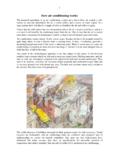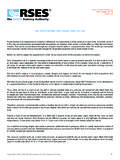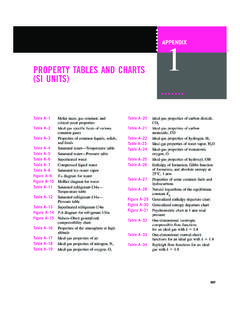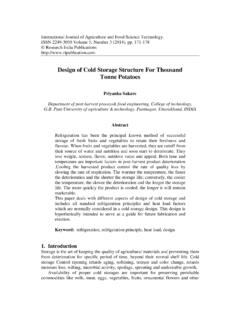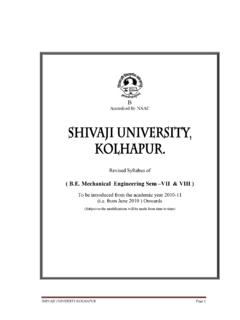Transcription of How to Dry Textile without Over-Drying. - …
1 How to Dry Textile without Bengtsson, Kathrine Segel, Henrietta Havsteen-MikkelsenHow to Dry Textile without Bengtsson, Kathrine Segel, Henrietta Havsteen-MikkelsenAbstractThe drying of a wet Textile material requires an air stream to take away the water vapour from thesurface. Adding heat speeds up drying . The following lecture on a very basic experiment confirmsthis : Heat and ventilation are each essential to evaporate water from a purpose of this experiment is to investigate the drying mechanisms of Textile . This will be donewith the help of a heat- and/or air-source, building on the principle of the psychrometer. Apsychrometer consists of two thermometers measuring the temperature of the air and a parallel wetcloth.
2 When equilibrium is reached after a few minutes of air circulation the two temperatures areread and inserted to the psychrometric chart to decide, for example, the relative chart. Garry Thomson: The Museum Environment. Second Edition. Butterworth-Heinemann. 1986. p. wet material contains water molecules. Under normal conditions these molecules will start toevaporate into the air, if the relative humidity of the air is lower than 100%. The evaporation ofwater molecules will result in a temperature drop, because the energy used for evaporation is takenfrom the surrounding water molecules in the wet material. 1 How to Dry Textile without Bengtsson, Kathrine Segel, Henrietta Havsteen-MikkelsenTherefore the evaporation rate is depending on two independent factors:1: Heat.
3 When adding heat the temperature of the surrounding air will raise and the relativehumidity of the same air will drop. Therefore this air can now contain more water, which againspeeds up the process of : Air circulation. The air passing by the wet material will have a relative humidity of a 100% whenleaving the material. By creating an air flow, fresh air (able to contain water) will be also speeds up the process of contains water corresponding to the relative humidity in the air. When the air temperature is20oC and the relative humidity is 50%, a given piece of Textile will contain around 9% of moisturein the fibres (capillaries). Therefore, when a piece of Textile is dried it should be avoided that thismoisture leaves the fibres, because this will lead to a deformation of the Textile fibre.
4 A wet piece of Textile is surrounded by a layer of water molecules, but it also contains the abovementioned water molecules in the fibres, so called bound water. When drying a piece of Textile , it isonly the surrounding layer of water that should leave the Textile fibre. Experimental principalThe experiment is not looking at the fastest way of drying a Textile but possibly the safest. Thiswill be done by looking at the effects of the two independent factors, heat and air circulation. Sincethe goal is to avoid over - drying of the Textile the heat will be added under control and only to theambient temperature. Therefore the added heat corresponds to the drop in temperature when thewater is evaporating from the Textile . To provide heat a hot plate is used.
5 The Textile is then placed on the plate. A fan is provided forcreating air details A hot plate is covered by two (heat conducting) brass plates with an isolating layer in starting the experiments the heat-distribution on the brass plate was measured to insure thatthe temperature of the plate was even. The upper brass plate is covered by overlapping sheets ofplain woven cotton cloth (see ). In the middle area lies two identical pieces of cloth: one to bemoveable for weighing, the other serves as a reference in which is sown 3 cm of a thermo coupler,and which is marked by a coloured thread at each end to facilitate measuring any change indimension during the drying process (see ). 2 How to Dry Textile without Bengtsson, Kathrine Segel, Henrietta Havsteen-Mikkelsen weighing the piece of cloth this is removed from the hot plate with a tweezers to avoidexchange of moisture with the hand.
6 Before weighing the cloth is slid into a plastic bag this is thensealed so that no water will evaporate into the air. During weighing, the fan (if used in theexperiment) is turned off. The fan is in a distance of 2 meters and the ventilation is approximatelyput to 1 1: drying on a hot plate with fanExperiment 2: drying on a hot plate without fanExperiment 3: drying on a cold plate with fanEquipment used: Thermometer: Microprocessor Thermometer, Type Thermocouple, Model HH23 Omega. Weight: Mettler PJ400, < > Hotplate: IKA-Combimag RCT 0-350 C, diameter RH-measurement: TESTO 601 testoterm, %RF/RH/HR- C/ F, Sekunden-hygrometer 601,measuring range , -200-+ C, dew point. Fan: mrk. Alaska AD96M, 2 speeds, 50 W Two metal plates: Brass ( x 25cm) Isolating material: Promatco (synthetic felt, chock absorbing material) Ruler: In centimetres Water Cotton cloth, plain woven, 13warp 11weft in dry stage.
7 Cotton fibre verified by microscopy. Needle and thread Plastic bag with closing mechanism Tweezers3 How to Dry Textile without Bengtsson, Kathrine Segel, Henrietta Havsteen-MikkelsenResults 4 How to Dry Textile without Bengtsson, Kathrine Segel, Henrietta Havsteen-MikkelsenDiscussionHypothesis: Heat and ventilation are each essential to evaporate water from a plotting of the three curves, based on weight (or % content of water) vs. time, shows the fastestdrying result with heat (kept at room temperature) and fan on (approx. 40 min.).Second fast drying comes from the ventilator without heat (approx. 70 min.).Slowest rate is obtained with only keeping the heat at room temperature without blowing vapouraway (approx. 120 min.).The three experiments had similar curves ( ).
8 All three had a high evaporation rate in thebeginning but after 5-10 minutes the speed slowed down and followed a linear slope - ending with afinal deviation. The high evaporation rate in the beginning can be explained by some water dropsleft in the bag after first wet-weighing. If a straight line is drawn through the measured points fromthe three experiments in fig. 1, the three lines will all meet in the same point on the y-axis. Thisindicates in theory that the samples all had the same amount of water pr. square meter. In fig. 1 thebending of the curves can be explained by the samples containing more than 100% water from thebeginning of the synthetic Textile instead of natural fibres would possibly have resulted in a curve with asimilar gradient, but without the final :- Not the same amount of water in the samples, as the experiments started out.
9 - Did not register the temperature in the two first experiments - The ventilation is not known accurate- Room not 100% controlled. Draft through windows and people coming in and out of to Dry Textile without Bengtsson, Kathrine Segel, Henrietta Havsteen-Mikkelsen- Hotplate is varying in temp. 1- Drops of water are left in bag after first Temperature rises in Textile when ventilation is turned Textile is taken off hotplate for weighing which exposes the Textile to extra air circulation for afew seconds. The conclusion of the experiments is that the combination of controlled heat and ventilation has thestrongest effect on drying the textiles without over - drying . The experiments also show that theeffect of air is more important than controlled Experiment 1 Room temp.
10 : 20-20,5oCRelative humidity: 42-44%Measured lenght (dry): 112,0mmWeight (dry), bag + sample: 3,16gWeight, bag: 1,90gWeight (dry), sample: 1,26gDistance to fan: 200cmv gt (g)vand %tid (min)mm3,23188,60110,02,70136,85110,02,3 7107,911110,02,0176,919110,01,7150,02411 0,01,4728,928110,01,3417,534109,51,3014, 039109,51,3014,044109,51,2913,048109,51, 3014,054109,5 Experiment 2 Room temp.: 20,5oCRelative humidity: 42%Measured lenght (dry): 111,0mmWeight (dry), bag + sample: 3,16gWeight, bag: 1,90gWeight (dry), sample: 1,26gv gt (g)vand %tid (min)mm3,40198,20111,03,14175,45109,52,8 9153,510109,52,71137,716109,52,59127,221 109,52,52121,125109,52,45114,930109,52,3 8108,835109,52,32103,540109,52,2295,7451 09,52,1386,850109,52,0579,855109,51,9873 ,760109,51,9369,365109,51,8764,070109,51 ,7755,375109,51,6847,480109,51,6040,4851 09,51,5334,290109,51,4527,295109,51,4123 ,7100109,51,3619,3105109,51,2913,9125109 ,56 How to Dry Textile without Bengtsson, Kathrine Segel, Henrietta Havsteen-MikkelsenExperiment 3 Room temp.

